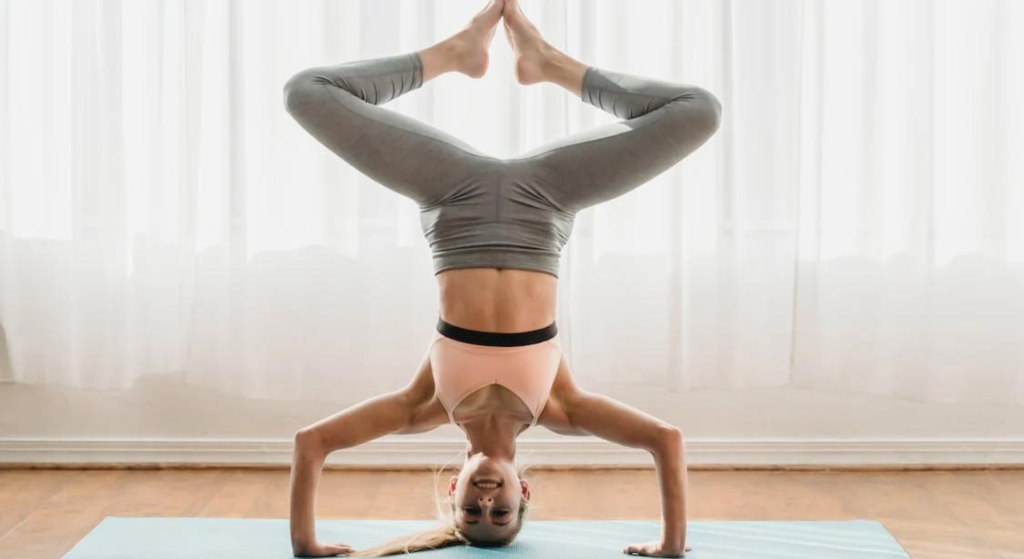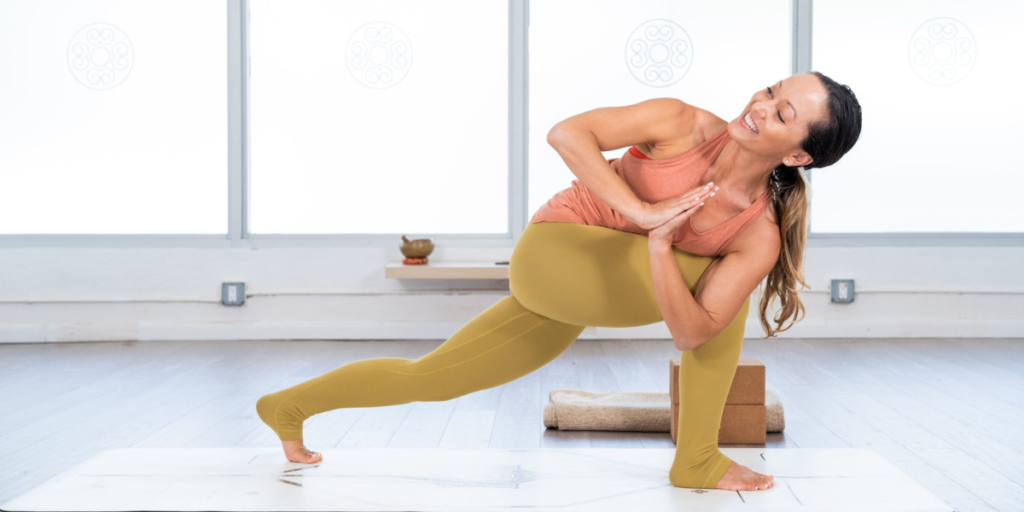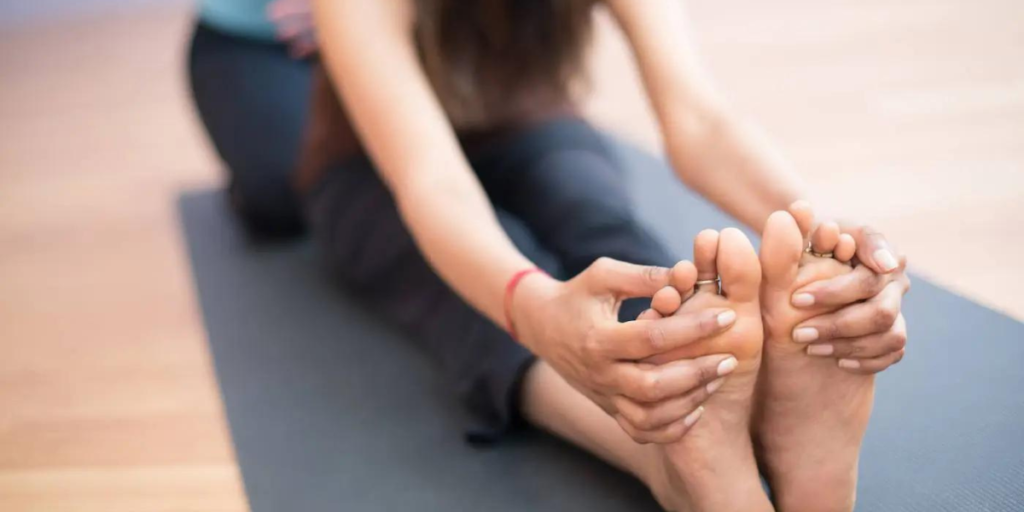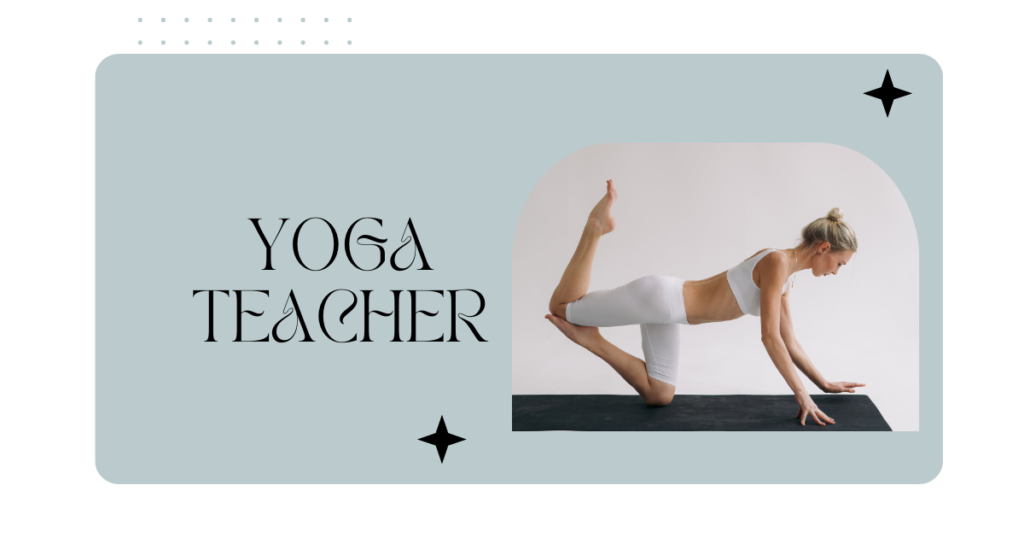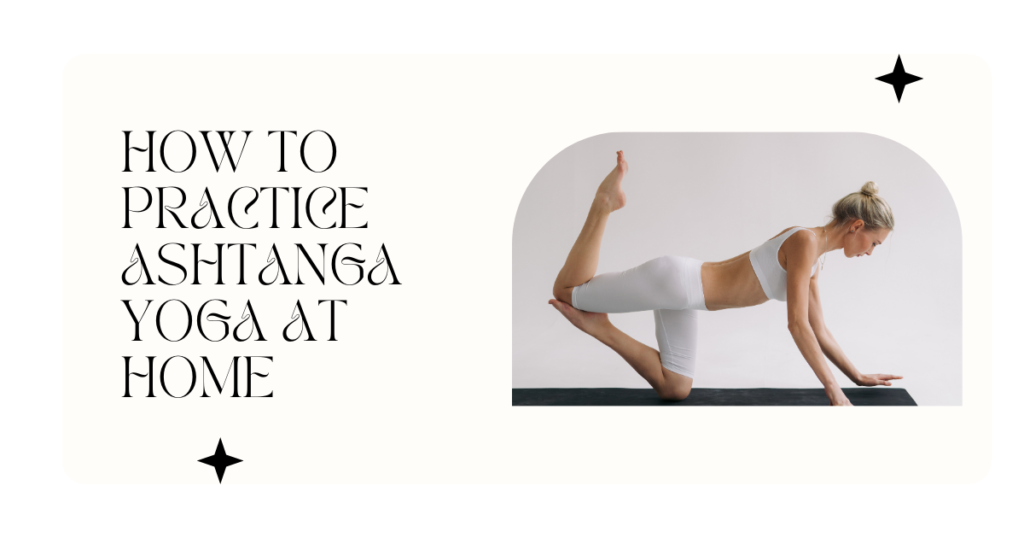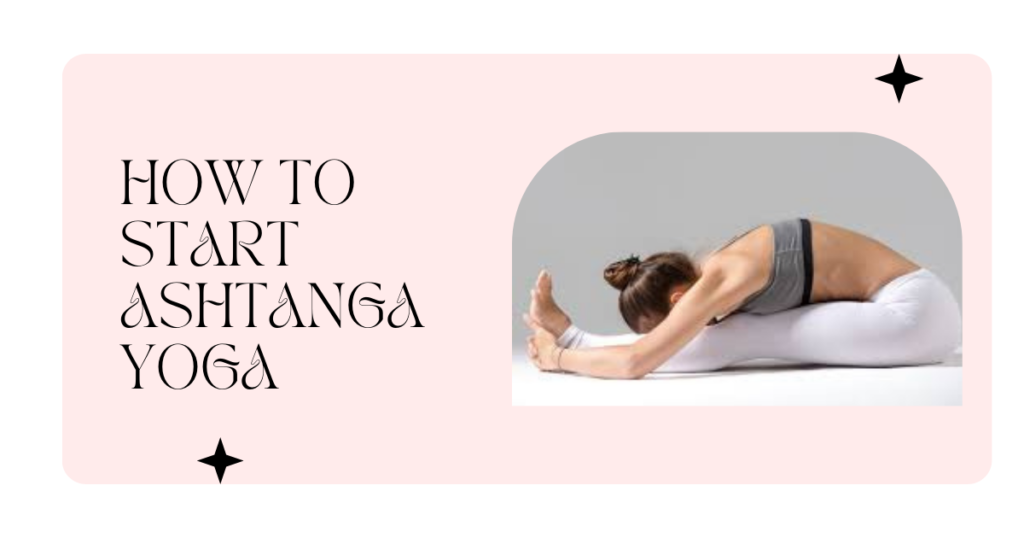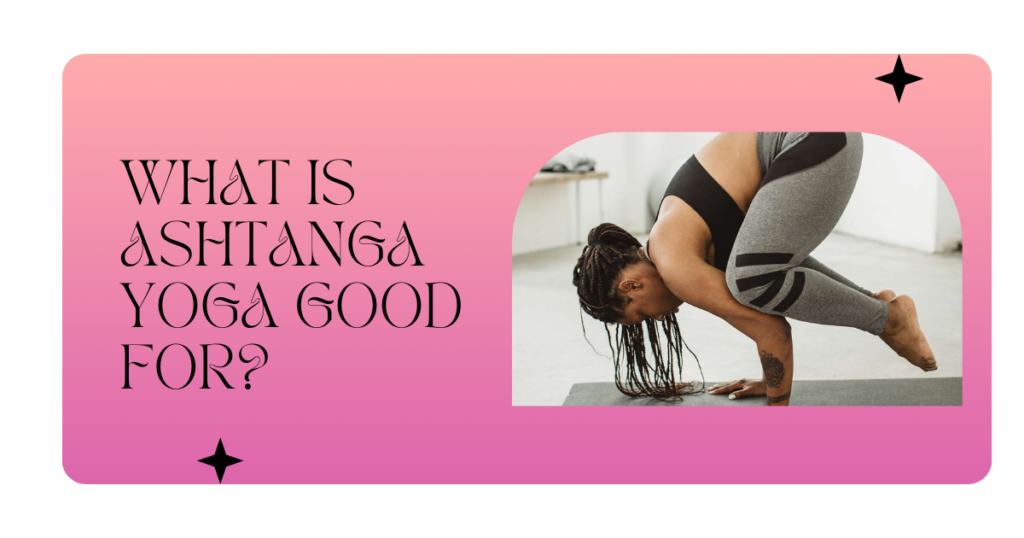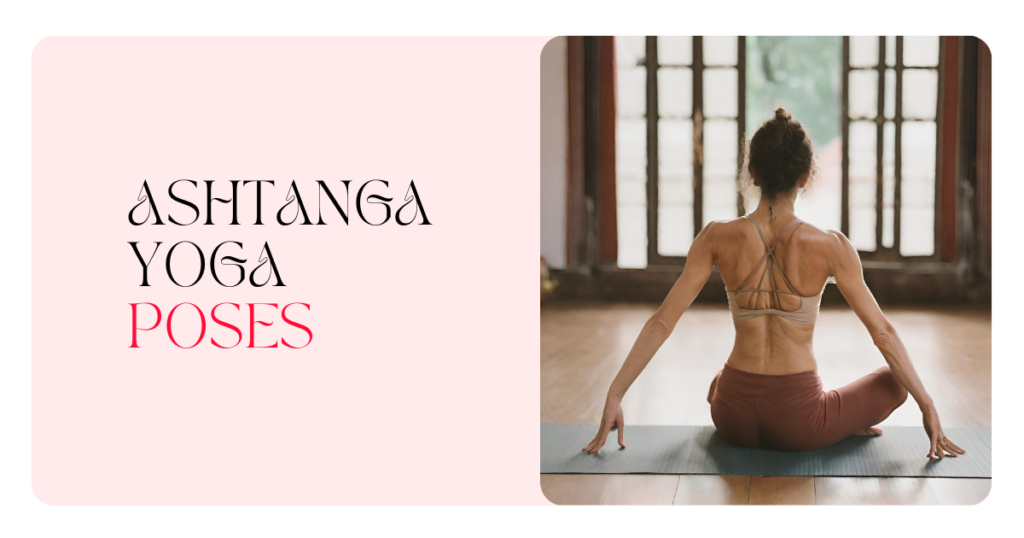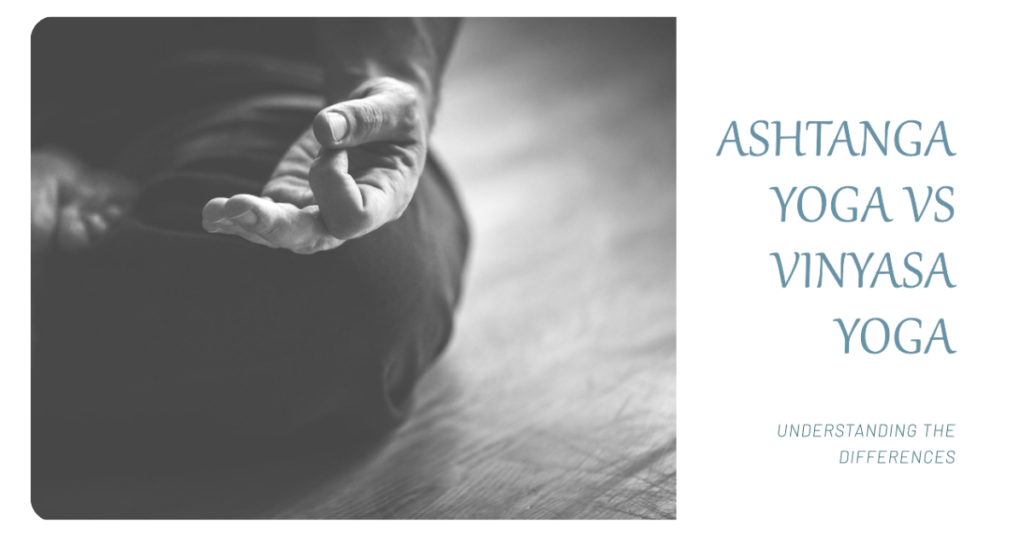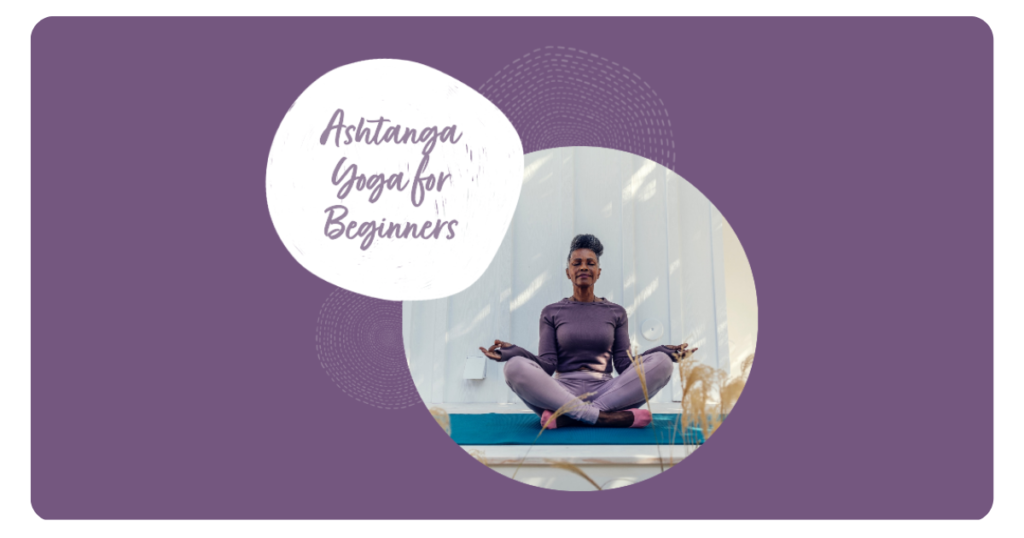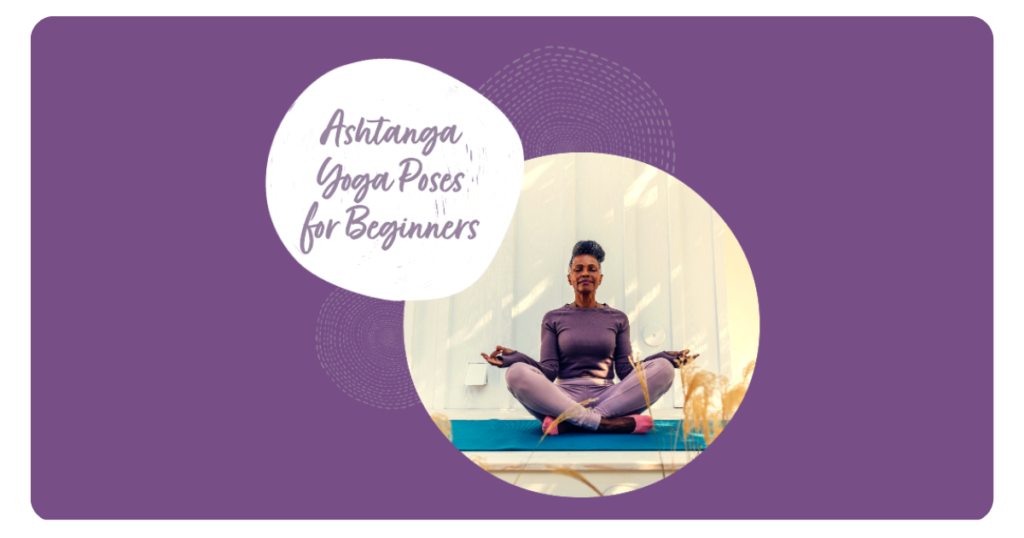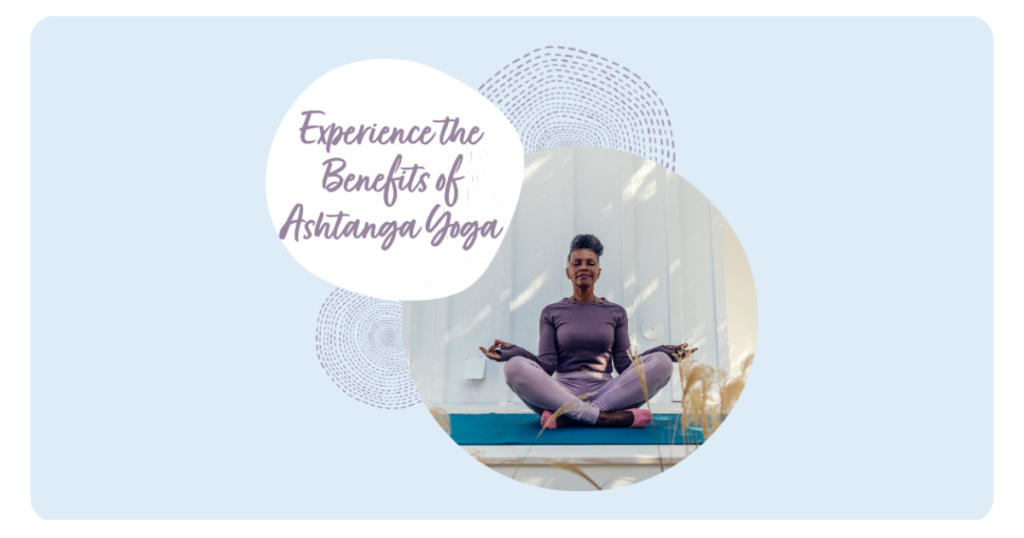
Introduction
Ashtanga yoga is a traditional and powerful practice that has the ability to transform your mind, body, and spirit. This ancient system, which originated in Mysore, India, is known for its set sequence of postures (asanas) that are linked together through a series of synchronized movements and deep, rhythmic breathing. While the physical practice of Ashtanga yoga is undoubtedly challenging, it is the combination of movement, breath, and focus that makes this style of yoga truly transformative.
In this comprehensive guide, we will delve into the multitude of benefits that Ashtanga yoga can provide, from improved physical health and mental well-being to a deeper connection with your inner self. Whether you’re a seasoned yogi or new to the practice, this article will inspire you to embark on the Ashtanga journey and experience the life-changing power it has to offer. Ashtanga Yoga Benefits
Physical Benefits of Ashtanga Yoga
Ashtanga yoga is often referred to as a “yoga therapy” because of the profound physical benefits it can provide. Through the practice of this dynamic and flowing style, you can expect to experience:
- Increased Strength, Flexibility, and Stamina: The set sequence of postures in Ashtanga yoga is designed to work every muscle group in the body, gradually building strength and flexibility over time. The constant movement and incorporation of challenging poses, such as arm balances and inversions, also improve overall stamina and endurance. As you progress in your practice, you’ll notice your ability to hold poses for longer periods and transition between them with greater ease.
- Improved Circulation and Detoxification: The synchronized movements and deep breathing in Ashtanga yoga promote better circulation, which helps to deliver oxygen and nutrients to all cells in the body more efficiently. This improved circulation also aids in the removal of toxins and metabolic waste, contributing to a healthier overall system. The twisting postures in Ashtanga are particularly effective at massaging internal organs and promoting lymphatic drainage, further enhancing the detoxification process.
- Toned and Sculpted Body: Ashtanga yoga is a powerful form of exercise that can help you achieve a toned and sculpted physique. The constant engagement of multiple muscle groups during the practice works to build lean muscle mass and burn excess fat, resulting in a more defined and athletic build. The combination of strength-building and cardio elements in Ashtanga makes it an effective full-body workout.
- Maintaining a Healthy Weight: Regular practice of Ashtanga yoga can contribute to weight management and a healthy body mass index (BMI). The combination of physical exertion and mindful breathing helps to boost metabolism and burn calories, while also promoting a balanced and mindful relationship with food. Many practitioners report increased mindfulness around eating habits and cravings, leading to healthier choices.
- Relief from Back Pain and Musculoskeletal Issues: The strengthening and stretching aspects of Ashtanga yoga can be particularly beneficial for those suffering from chronic back pain or other musculoskeletal issues. The practice helps to improve posture, increase spinal flexibility, and strengthen the core and supporting muscles, alleviating pressure and discomfort in the affected areas. Poses like the forward folds and backbends work to lengthen and decompress the spine, while the standing poses build strength and stability.
In addition to these physical benefits, Ashtanga yoga can also improve overall athleticism and performance in other sports or physical activities. The combination of strength, flexibility, balance, and focus cultivated through the practice can translate to enhanced movement patterns and injury prevention in various athletic pursuits.
It’s important to note that while Ashtanga yoga can be incredibly beneficial, it is also a physically demanding practice. It’s recommended to start slowly and work with a qualified instructor, especially if you’re new to the practice or have any pre-existing injuries or conditions. Proper alignment and modifications can be provided to ensure a safe and effective practice for all levels.
By committing to a regular Ashtanga yoga practice, you can experience these physical benefits and more, leading to a stronger, more flexible, and healthier body overall. As you progress on your Ashtanga journey, you’ll not only transform your physical being but also cultivate a deeper connection with your inner self, as we’ll explore in the following sections. more
Ashtanga Yoga Benefits for Mental Health
While the physical benefits of Ashtanga yoga are undeniable, its power extends far beyond the realm of the physical. This ancient practice has the ability to profoundly impact mental health and emotional well-being, offering a multitude of benefits that can help you navigate the stresses and challenges of modern life with greater ease and resilience.
- Reduces Stress and Anxiety: The practice of Ashtanga yoga encourages present-moment awareness and focus, which can help to quiet the constant chatter of the mind and alleviate feelings of stress and anxiety. The combination of physical movement, deep breathing, and mindfulness cultivated during the practice can activate the body’s relaxation response, lowering cortisol levels and promoting a sense of calm and inner peace.
- Boosts Mood and Positive Mindset: Regular Ashtanga yoga practice has been shown to increase the production of endorphins, the body’s natural feel-good chemicals. These endorphins can elevate mood, improve overall outlook, and even alleviate symptoms of depression. Additionally, the sense of accomplishment and self-confidence gained through mastering challenging poses can contribute to a more positive mindset and self-image.
- Improves Focus and Concentration: The practice of Ashtanga yoga requires intense focus and concentration, as you move through the set sequence of postures while coordinating breath and movement. This mental discipline translates off the mat, helping to improve focus and concentration in other areas of life, such as work, study, or creative pursuits.
- Promotes Better Sleep: The combination of physical exertion, deep breathing, and mental relaxation practiced in Ashtanga yoga can help to improve sleep quality and duration. Many practitioners report feeling more relaxed and able to fall asleep more easily after a consistent yoga practice. Additionally, the reduction in stress and anxiety levels can alleviate sleep disturbances caused by worry or racing thoughts.
- Gives a Sense of Accomplishment: As you progress through the challenging Ashtanga yoga sequence, you’ll experience a sense of accomplishment and empowerment that can boost self-confidence and overall well-being. The ability to push through physical and mental barriers can cultivate a “can-do” attitude that extends to other areas of life, inspiring you to take on new challenges with a positive and resilient mindset.
In addition to these mental health benefits, Ashtanga yoga can also foster a deeper connection to oneself and a greater sense of self-awareness. The practice encourages introspection and self-study, helping you to better understand your thoughts, emotions, and patterns, and ultimately leading to personal growth and transformation. “Ashtanga Yoga vs Vinyasa Yoga: Understanding the Differences”
The Ashtanga Yoga Breathing Technique (Ujjayi Pranayama)
At the heart of the Ashtanga yoga practice is the powerful breathing technique known as Ujjayi Pranayama. This deep, rhythmic breathing pattern is an integral part of the practice, synchronizing movement and breath to create a fluid, meditative flow.
What is Ujjayi Breath and Its Purpose?
Ujjayi Pranayama, also known as the “Victorious Breath,” is a specific breathing technique that involves constricting the back of the throat slightly to create a soft, oceanic sound as you inhale and exhale. This controlled breath is meant to be audible, helping to focus the mind and maintain a steady rhythm throughout the practice.
The purpose of Ujjayi Pranayama is twofold:
- Focuses the Mind: The sound and rhythmic nature of the Ujjayi breath act as an anchor for the mind, helping to maintain present-moment awareness and concentration during the physical practice. This focused attention is crucial in Ashtanga yoga, as it allows you to move mindfully and with intention, reducing the risk of injury and enhancing the overall experience.
- Boosts Endurance: The deep, controlled breathing pattern of Ujjayi Pranayama helps to regulate the flow of oxygen throughout the body, increasing stamina and endurance during the physically demanding Ashtanga yoga sequence. This steady breath also helps to manage the heart rate and prevent overexertion or fatigue.
How to Practice Ujjayi Breath Properly
Mastering the Ujjayi Pranayama technique takes time and practice, but here are some tips to help you get started:
- Find the Throat Constriction: Begin by exhaling completely, then inhale through your nose while constricting the back of your throat slightly. This should create a subtle, audible sound, similar to the ocean or a whisper.
- Maintain a Steady Rhythm: Once you’ve found the throat constriction, focus on maintaining a steady, rhythmic breathing pattern. Inhale and exhale through the nose, keeping the breath smooth and continuous.
- Engage the Diaphragm: Breathe deeply, allowing your belly to expand on the inhale and contract on the exhale. This deep, diaphragmatic breathing is essential for the Ujjayi Pranayama technique.
- Coordinate with Movement: As you progress in your Ashtanga practice, coordinate your Ujjayi breath with each movement and posture transition, inhaling and exhaling in sync with the flow of the sequence.
Remember, consistency is key when it comes to mastering the Ujjayi Pranayama technique. With regular practice, it will become second nature, enhancing your Ashtanga yoga experience and providing a myriad of physical and mental benefits.
Ashtanga’s Mind-Body Connection
One of the most profound aspects of Ashtanga yoga is its ability to cultivate a deep connection between the mind and body. This practice goes beyond mere physical exercise, offering a holistic experience that encourages present-moment awareness, mindfulness, and self-study.
The Union of Movement, Breath, and Gaze (Drishti)
In Ashtanga yoga, every movement is synchronized with the breath and the gaze (Drishti). This intentional focus on the breath, combined with the specific gaze points, helps to quiet the mind and bring awareness to the present moment. As you move through the set sequence of postures, you’re encouraged to maintain a consistent Ujjayi breath and direct your gaze (Drishti) toward specific points, such as the tip of the nose or the navel.
This union of movement, breath, and gaze creates a meditative flow, allowing you to fully immerse yourself in the practice and experience a profound mind-body connection. The physical practice becomes a moving meditation, where the body and mind are in harmony, and each movement is executed with intention and awareness.
Moving Meditation for Inner Peace
The flowing nature of Ashtanga yoga, combined with the focus on breath and gaze, creates a unique form of moving meditation. As you transition from one posture to the next, you’re encouraged to remain present and attentive, observing the sensations in your body and the fluctuations of your mind without judgment.
This practice of mindful movement and self-observation can lead to a profound sense of inner peace and stillness, even amidst the physical challenges of the practice. Over time, the mind becomes less reactive and more centered, allowing you to navigate life’s challenges with greater equanimity and clarity.
The mind-body connection cultivated through Ashtanga yoga extends beyond the physical practice, influencing your overall outlook and approach to life. As you become more attuned to the present moment and the sensations in your body, you may find yourself making more mindful choices in your daily life, from the foods you consume to the way you interact with others.
Overcoming Challenges on the Ashtanga Path
While the benefits of Ashtanga yoga are numerous, the practice is not without its challenges. The set sequence of postures, combined with the emphasis on breath and focus, can be demanding both physically and mentally. However, it is through facing and overcoming these challenges that true growth and transformation occur.
Common Struggles and Obstacles
Some of the common struggles and obstacles that practitioners may encounter on the Ashtanga path include:
- Impatience: The desire for quick results can sometimes lead to frustration or a tendency to rush through the practice. Ashtanga yoga requires patience, as progress is often gradual and requires consistent effort over time.
- Ego: The ego can manifest in various ways during the practice, such as comparing oneself to others, striving for perfection, or pushing beyond one’s limits. Letting go of the ego and practicing with humility is essential for a fulfilling Ashtanga experience.
- Skipping Vinyasas: The vinyasas, or the transitional movements between postures, are an integral part of the Ashtanga practice. However, some practitioners may be tempted to skip or modify these transitions, which can disrupt the flow and intensity of the practice.
- Inconsistency: Consistency is key in Ashtanga yoga, as the benefits compound over time with regular practice. Inconsistent attendance or a lack of commitment can hinder progress and make it challenging to maintain the discipline required.
Cultivating Discipline and Fortitude
To overcome these challenges and fully embrace the Ashtanga path, practitioners must cultivate both physical and mental fortitude. This involves:
- Discipline: Developing a consistent practice routine and committing to showing up on your mat, even when it’s challenging or inconvenient. Discipline is essential for progressing in Ashtanga yoga.
- Patience and Acceptance: Embracing the journey and accepting that progress may be gradual. Letting go of expectations and comparing yourself to others can help you stay present and focused on your own practice.
- Humility and Beginner’s Mind: Approaching each practice with a sense of humility and a willingness to learn. Maintaining a beginner’s mindset can help you stay open to growth and avoid the pitfalls of ego or complacency.
- Self-Compassion: Being kind and compassionate towards yourself, especially during moments of struggle or perceived failure. Recognizing that challenges are opportunities for growth can help you navigate the Ashtanga path with grace and resilience.
By cultivating these qualities and embracing the challenges as part of the journey, you can deepen your practice and experience the profound transformative power of Ashtanga yoga.
Ashtanga for Specific Groups
While Ashtanga yoga can be beneficial for individuals of all ages and fitness levels, there are certain considerations and modifications that may be necessary for specific groups.
Beginners
If you’re new to Ashtanga yoga, it’s essential to start slowly and work with a qualified instructor. The set sequence can be physically demanding, and proper alignment and modifications are crucial to avoid injury and build a solid foundation.
Some tips for beginners:
- Start with the Primary Series (Yoga Chikitsa), which is the foundational sequence in Ashtanga.
- Learn the proper techniques for breathing (Ujjayi Pranayama) and the vinyasa transitions.
- Don’t hesitate to use props or modify poses as needed, especially if you have any limitations or injuries.
- Be patient and consistent – progress takes time, and the benefits will unfold gradually.
Pregnancy
Ashtanga yoga can be practiced during pregnancy, but it’s essential to work with a qualified instructor who can provide appropriate modifications and adjustments. Some general guidelines for practicing Ashtanga during pregnancy include:
- Avoid deep twists, inversions, and intense backbends, as these poses can be unsafe during pregnancy.
- Modify postures that put pressure on the abdomen or require lying on the belly.
- Listen to your body and take breaks as needed – don’t push yourself beyond your comfort level.
- Stay hydrated and avoid overheating or holding your breath.
It’s also recommended to consult with your healthcare provider before starting or continuing an Ashtanga practice during pregnancy.
Seniors and Therapeutic Uses
Ashtanga yoga can be incredibly beneficial for seniors and those with certain health conditions when practiced with appropriate modifications and under the guidance of a qualified instructor. The low-impact nature of the practice, combined with its emphasis on breath and mindfulness, can offer numerous therapeutic benefits, including:
- Improved balance and stability, reducing the risk of falls
- Increased flexibility and range of motion, alleviating joint stiffness
- Strengthening of muscles and bones, supporting overall mobility
- Stress reduction and improved mental clarity
- Potential relief from chronic conditions such as arthritis, hypertension, and anxiety
For seniors or those with specific health concerns, it’s crucial to work with an experienced Ashtanga teacher who can tailor the practice to your individual needs and abilities, ensuring a safe and effective experience. The 5 Best SPRI Exercise Mats for Home & Gym Workouts
Finding an Ashtanga Yoga Teacher and Community
While it is possible to practice Ashtanga yoga at home using online resources or instructional videos, the guidance and support of an experienced teacher and a dedicated community can significantly enhance your journey and understanding of this transformative practice.
The Value of Learning from an Ashtanga Yoga Teacher
An Ashtanga yoga teacher who has received proper training and has a deep understanding of the practice can offer invaluable guidance and insights. Here are some reasons why working with a qualified teacher is beneficial:
- Proper Alignment and Adjustments: An experienced teacher can ensure that you are practicing the postures with proper alignment and technique, reducing the risk of injury and maximizing the benefits of each pose.
- Personalized Modifications: Depending on your individual needs, limitations, or goals, a teacher can provide personalized modifications to make the practice more accessible or challenging as needed.
- Accountability and Motivation: Having a teacher and a dedicated community can provide accountability and motivation, encouraging you to show up consistently and maintain your practice.
- Deeper Understanding: A knowledgeable teacher can offer insights into the philosophy, history, and tradition behind Ashtanga yoga, helping you develop a deeper appreciation and understanding of the practice.
- Energetic Adjustments: In addition to physical adjustments, experienced Ashtanga teachers can also provide energetic adjustments, helping to align and balance your subtle energies for a more profound experience.
Qualities to Look for in an Ashtanga Yoga Studio
When seeking an Ashtanga yoga studio or teacher, it’s essential to find a space that aligns with the traditional teachings and values of the practice. Here are some qualities to look for:
- Authorized or Certified Teachers: Ideally, you want to learn from teachers who have been authorized or certified by respected Ashtanga lineages, such as those from the Krishna Pattabhi Jois Ashtanga Yoga Institute (KPJAYI) or other reputable sources.
- Emphasis on Traditional Ashtanga Principles: The studio should prioritize the traditional principles of Ashtanga yoga, including the set sequence of postures, breath synchronization (Ujjayi Pranayama), and the use of Drishti (focused gaze).
- Dedicated Mysore-Style Classes: Look for studios that offer Mysore-style classes, where students practice at their own pace under the guidance of the teacher, following the traditional self-practice method.
- Supportive and Non-Competitive Environment: The studio should foster a supportive and non-competitive environment, encouraging students to focus on their own practice and progress without comparison or judgment.
- Commitment to Lineage and Tradition: The studio should demonstrate a commitment to preserving the lineage and tradition of Ashtanga yoga, while also being open to respectful evolution and adaptation when necessary.
Online vs. In-Person Classes
While online classes and resources can be valuable supplements to your Ashtanga practice, there is no substitute for the guidance and energy of an in-person Ashtanga yoga teacher and community. Here are some considerations:
Online Classes:
- Convenient and accessible from anywhere
- Can be helpful for learning the basics or supplementing your practice
- Lack of personalized adjustments and energetic transmission
In-Person Classes:
- Direct feedback and adjustments from the teacher
- Immersive experience with the energy of the group practice
- Opportunity to develop a strong connection with the teacher and community
- May be more challenging to find a dedicated Ashtanga studio in some areas
Ultimately, a combination of online resources and in-person classes can be beneficial for a well-rounded Ashtanga yoga practice. If possible, prioritize finding a local Ashtanga community and teacher to guide you on this transformative journey.
Conclusion
Ashtanga yoga is a powerful and transformative practice that offers a multitude of benefits for the mind, body, and spirit. From increased strength and flexibility to improved mental clarity and emotional well-being, this ancient system has the potential to profoundly impact every aspect of your life.
By committing to a consistent Ashtanga practice and embracing the challenges along the way, you can cultivate discipline, patience, and a deep connection to your innermost self. The combination of physical exertion, breath synchronization, and focused awareness creates a moving meditation that quiets the mind and allows you to navigate life’s ups and downs with greater equanimity and grace.
Remember, the journey of Ashtanga yoga is one of self-discovery and personal growth. It requires dedication, humility, and a willingness to embrace the process. But as you progress along this path, you’ll experience a sense of empowerment and accomplishment that transcends the physical realm.
So, whether you’re a seasoned yogi or just beginning your journey, take the first step towards transforming your life through the practice of Ashtanga yoga. Find a qualified teacher, immerse yourself in a supportive community, and embark on this ancient tradition with an open heart and a beginner’s mind. The benefits that await are truly transformative.

